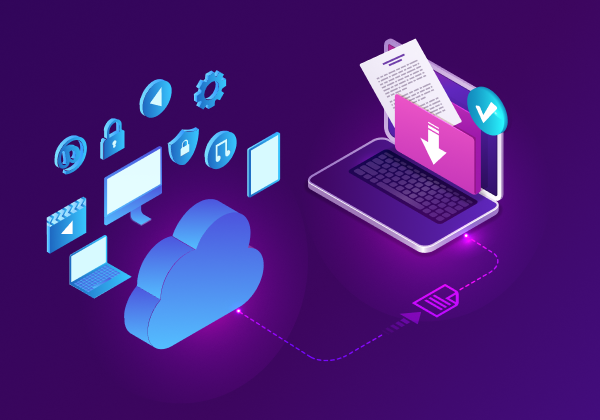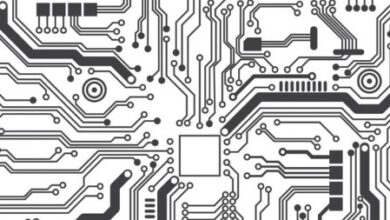Legacy DLP: Challenges, Limitations, and the Path Forward

Introduction
In today’s digital-first economy, data is the new currency. Organizations across industries—from healthcare and finance to education and retail—depend on information assets to run operations, serve customers, and maintain competitive advantage. But with the rise of cybercrime, insider threats, and stricter compliance regulations, securing data has become one of the most critical priorities for enterprises.
Data Loss Prevention (DLP) emerged as a category of solutions designed to monitor, detect, and prevent unauthorized sharing of sensitive information. For more than a decade, many organizations relied heavily on legacy DLP systems to secure data across endpoints, networks, and storage. While these early tools were groundbreaking for their time, today they are showing their age. Legacy DLP often struggles to keep pace with modern digital transformation initiatives, cloud adoption, and hybrid work environments.
This article explores what legacy DLP is, its core features, why it is becoming increasingly outdated, and the challenges businesses face when continuing to depend on it. We will also discuss modern alternatives and how organizations can transition from legacy to next-generation data protection.
What is Legacy DLP?
Legacy DLP refers to earlier generations of data loss prevention technologies, typically developed in the early-to-mid 2000s. These tools were built to help enterprises identify and control sensitive data by scanning content, applying rules, and enforcing policies. They generally operated within controlled corporate environments where employees worked on-premises, used company-owned devices, and data mostly resided within internal servers or physical storage.
See also: Innovations in Technology 865616892
Core Capabilities of Legacy DLP
Content Inspection
Legacy systems scan data in motion (across the network), at rest (in storage), or in use (on endpoints).
They use pattern-matching techniques such as regular expressions, dictionaries, or fingerprinting to detect sensitive information like Social Security numbers or credit card details.
Policy Enforcement
Administrators set predefined rules to restrict the movement of data, block unauthorized transfers, or alert security teams about potential violations.
Endpoint and Network Coverage
Traditional DLP often relied on endpoint agents and network gateways to monitor file transfers, email attachments, or uploads.
Compliance Reporting
Reports and audit logs were generated to help organizations meet regulatory requirements such as HIPAA, PCI DSS, or GDPR (when it later came into force).
These functionalities worked well in a world where data was centralized, and IT had complete control over user environments.
Why Legacy DLP is Becoming Obsolete
While legacy DLP tools laid the foundation for data protection, they were not designed for the complexity of today’s digital ecosystem. Several technological and business shifts have exposed their limitations.
1. The Cloud Revolution
Legacy DLP was built for on-premises networks, not for the cloud-first environments that dominate today. Data now flows freely between Software-as-a-Service (SaaS) applications, cloud storage, and remote collaboration tools. Legacy systems struggle to monitor or control data once it leaves the corporate perimeter.
2. Remote and Hybrid Work
With employees working from home, coffee shops, or co-working spaces, the concept of a secure perimeter has dissolved. Legacy DLP assumes a static office environment, which makes enforcing policies in dynamic, distributed settings extremely difficult.
3. Data Volume and Complexity
Data today is not just text documents and spreadsheets—it includes multimedia, chat messages, source code, and intellectual property stored in structured and unstructured formats. Legacy DLP tools lack the intelligence to effectively analyze and classify this variety of data at scale.
4. High False Positives
One of the biggest complaints about legacy DLP is the overwhelming number of false positives it generates. Basic pattern-matching rules often misidentify benign data as sensitive, leading to alert fatigue and user frustration.
5. Limited User Awareness
Legacy systems often focus on blocking or restricting activity without educating users. This creates friction, resentment, and workarounds that undermine security efforts.
6. Lack of Integration with Modern Security Tools
Cybersecurity today requires a layered, integrated approach involving identity management, zero trust, threat detection, and cloud security. Legacy DLP is often siloed, unable to share intelligence or adapt to broader security ecosystems.
Common Challenges with Legacy DLP
Organizations still using legacy DLP often face recurring operational and strategic issues.
1. Complexity of Deployment and Management
Legacy DLP solutions are notorious for being difficult to deploy. They require months of planning, extensive customization, and ongoing maintenance. Security teams often struggle to fine-tune policies that balance data protection with business productivity.
2. Poor Scalability
As organizations grow, add more users, or adopt new technologies, legacy DLP systems struggle to scale. They often require expensive hardware upgrades or additional licenses that increase total cost of ownership.
3. Performance Issues
Continuous content scanning can slow down systems, networks, and applications. Employees frequently report degraded performance when legacy DLP agents are running in the background.
4. Insider Threat Blind Spots
While legacy tools are designed to prevent accidental data leakage, they are less effective against malicious insiders who intentionally circumvent rules or exploit system loopholes.
5. Compliance Gaps
As regulations evolve, legacy DLP struggles to keep up. For example, ensuring compliance with cloud-specific mandates or data sovereignty laws can be nearly impossible with outdated technology.
Legacy DLP in Regulated Industries
Some industries still cling to legacy DLP because of compliance pressures or budget constraints. For instance:
- Healthcare organizations may continue using DLP to protect patient health information, but legacy systems often fail to integrate with modern electronic health record platforms.
- Financial services firms rely on DLP to safeguard payment card data, yet cloud-based trading platforms and mobile banking apps are outside its scope.
- Education institutions may attempt to protect student records, but remote learning platforms are rarely covered by older DLP solutions.
While these industries have valid concerns, the reliance on outdated systems exposes them to greater risk in the long run.
The Rise of Next-Generation DLP
In response to the shortcomings of legacy tools, next-generation DLP (sometimes called modern DLP) has emerged. These platforms are designed for cloud-native environments and hybrid workforces.
Key Features of Next-Gen DLP
Cloud-Native Coverage
Provides visibility into SaaS applications, cloud storage, and collaboration tools.
Monitors data across environments without requiring traffic backhauling.
Context-Aware Policies
Goes beyond simple pattern matching by analyzing context, user behavior, and risk factors.
Machine Learning and AI
Uses advanced algorithms to reduce false positives and automatically classify sensitive information.r-Centric Approach
Educates users with real-time prompts instead of only blocking activity.
Encourages secure behavior without disrupting productivity.
Integration with Broader Security Ecosystem
Works alongside CASB (Cloud Access Security Brokers), Zero Trust frameworks, and SIEM tools.
Transitioning from Legacy to Modern DLP
For organizations still relying on legacy DLP, the path forward involves a strategic transition plan.
1. Assess Current State
- Identify what data is being protected, where gaps exist, and what compliance requirements need to be met.
2. Define Business Goals
- Consider whether the priority is compliance, insider threat protection, intellectual property security, or cloud data governance.
3. Pilot Modern Solutions
- Test cloud-native DLP solutions in small segments before a full rollout.
4. Educate Users
- Security awareness should be embedded into the DLP journey. Educating employees helps reduce accidental leaks and improves cooperation.
5. Gradual Migration
- A phased approach allows organizations to maintain legacy systems for critical workloads while gradually introducing next-generation tools.
Benefits of Moving Beyond Legacy DLP
Enhanced Security Posture
Broader coverage across cloud, endpoint, and hybrid environments.
Better User Experience
Fewer disruptions and intelligent prompts encourage secure workflows.
Improved Compliance Readiness
Simplifies audits and adapts to evolving regulations.
Cost Efficiency
Reduces reliance on expensive hardware and maintenance contracts.
Future-Proofing
Ensures data protection strategies evolve with technological advancements.
Conclusion
Legacy DLP systems played a vital role in shaping the early data security landscape. They offered the first structured approach to detecting and preventing sensitive information leaks. However, as organizations embrace cloud computing, remote work, and ever-increasing data complexity, legacy DLP is no longer sufficient.
Clinging to outdated systems creates blind spots, inefficiencies, and unnecessary risks. The path forward lies in modern, cloud-native, context-aware, and integrated DLP solutions that can adapt to the evolving digital ecosystem. By transitioning to next-generation DLP, organizations not only protect their most valuable asset—data—but also enable employees to work securely without compromising productivity.
FAQs about Legacy DLP
1. What is the main limitation of legacy DLP?
Legacy DLP cannot effectively monitor or control data across cloud applications and remote work environments, making it unsuitable for modern enterprises.
2. Why do companies still use legacy DLP?
Some organizations continue to use legacy DLP due to existing investments, compliance needs, or lack of resources for upgrading, despite the risks.
3. Can legacy DLP be updated for cloud environments?
While some vendors offer add-ons or integrations, most legacy DLP systems were not built for cloud-native coverage, limiting their effectiveness.
4. How does next-generation DLP improve user experience?
Modern DLP tools provide context-aware alerts, reduce false positives, and educate users in real time rather than simply blocking activities.
5. What industries are most impacted by legacy DLP limitations?
Industries like healthcare, finance, and education are particularly vulnerable since they handle sensitive data but often rely on outdated systems.




